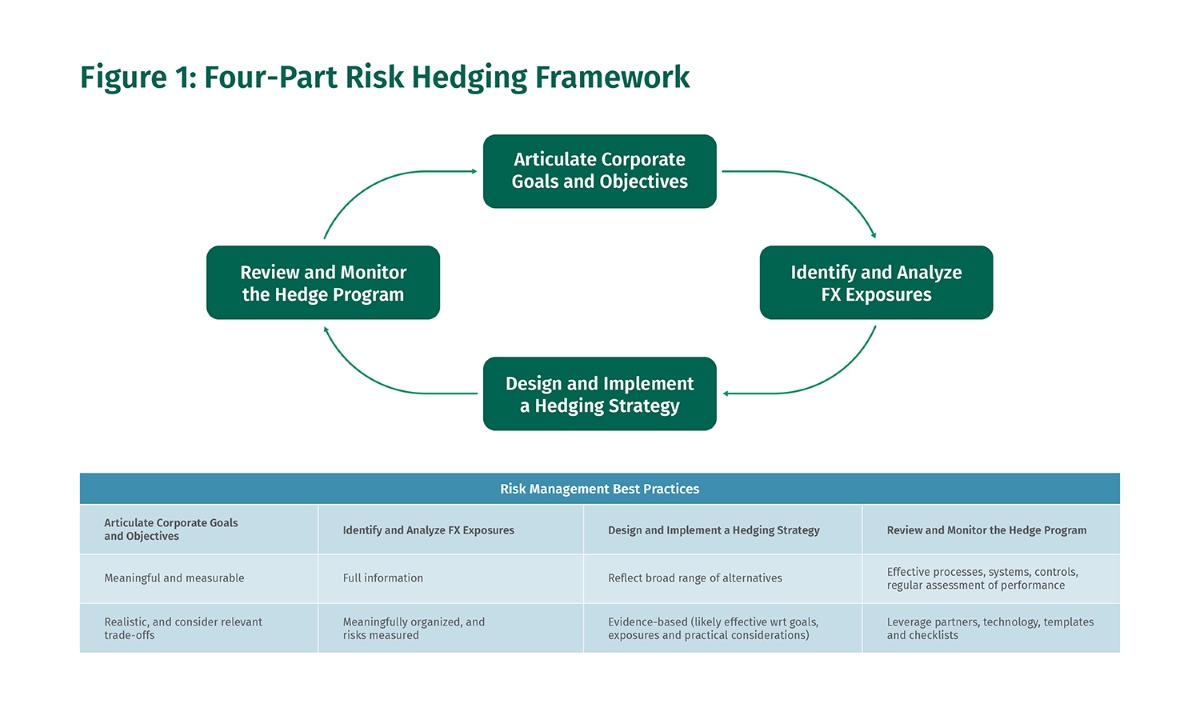Home>Finance>How To Decide Which Bond Hedging Strategy To Pick


Finance
How To Decide Which Bond Hedging Strategy To Pick
Published: January 15, 2024
Looking for the ideal bond hedging strategy? Explore our finance guide on how to decide which option suits your investment goals and risk tolerance.
(Many of the links in this article redirect to a specific reviewed product. Your purchase of these products through affiliate links helps to generate commission for LiveWell, at no extra cost. Learn more)
Table of Contents
Introduction
In the world of finance, bond hedging strategies play a crucial role in managing risk and optimizing investment returns. The bond market can be volatile and subject to various economic and interest rate fluctuations, making it necessary for investors to implement hedging strategies to protect their portfolios.
But with numerous bond hedging strategies available, how do you decide which one to pick? This article aims to provide you with a comprehensive understanding of different bond hedging strategies and factors to consider when selecting the most appropriate strategy for your investment goals.
Before we delve into the specifics, it’s important to note that bond hedging strategies are designed to minimize the impact of market fluctuations on bond holdings. These strategies can help investors mitigate risks associated with changes in interest rates, credit quality, and market liquidity.
Choosing the right bond hedging strategy requires a thorough evaluation of various factors, including your risk tolerance, investment objectives, market conditions, and the specific characteristics of the bonds in your portfolio.
In the following sections, we will explore some commonly used bond hedging strategies, such as duration matching, convexity matching, yield curve strategies, interest rate futures, options on bonds, and credit derivatives. We will also discuss how to assess the cost-effectiveness of these strategies and evaluate the trade-off between risk and reward.
By the end of this article, you will have a solid understanding of the different bond hedging strategies available to you and be equipped with the knowledge to make an informed decision based on your investment needs and risk appetite.
Understanding Bond Hedging Strategies
Bond hedging strategies are investment techniques employed to manage the risks associated with bond holdings. These strategies aim to protect investors from potential losses caused by changes in interest rates, credit quality, or market conditions. Understanding the various bond hedging strategies is essential for investors looking to safeguard their portfolios.
One commonly used bond hedging strategy is duration matching. Duration is a measure of a bond’s price sensitivity to changes in interest rates. By matching the duration of a bond with the duration of a hedging instrument, such as a bond futures contract or an interest rate swap, investors can neutralize the impact of interest rate fluctuations on their bond portfolio. Duration matching is particularly effective when interest rates are expected to change significantly.
Another important concept in bond hedging is convexity. Convexity measures the curvature of the relationship between a bond’s price and its yield. Hedging based on convexity matching involves combining bonds with different convexity profiles to offset the price changes caused by variations in interest rates. This strategy is especially useful when interest rates are expected to change moderately.
Yield curve strategies focus on exploiting the relationship between different maturities of bonds. A steep yield curve indicates higher yields for longer-dated bonds, while a flat or inverted yield curve indicates lower yields for longer-dated bonds. By positioning their bond portfolio on the yield curve, investors can capitalize on these yield differentials and protect against potential losses.
Interest rate futures are derivative contracts that allow investors to lock in an interest rate at a future date. By taking positions in interest rate futures contracts, investors can hedge against interest rate movements, as the value of the futures contract will move in the opposite direction of the underlying interest rate. This hedging strategy is commonly used by institutional investors to manage interest rate risk.
Options on bonds provide investors with the right, but not the obligation, to buy or sell a bond at a predetermined price within a specified time frame. By purchasing options on bonds, investors can protect themselves from adverse market movements while still benefiting from potential price appreciation. This strategy is particularly useful when there is uncertainty about the direction of interest rates.
Credit derivatives are financial instruments that allow investors to hedge against the credit risk associated with bond holdings. Instruments like credit default swaps (CDS) can be used to insure against default risk or changes in credit spreads. This hedging strategy is especially relevant when investing in corporate bonds or bonds with lower credit ratings.
Understanding the different bond hedging strategies is essential, but it is equally important to consider other factors when making a decision. In the next section, we will discuss these factors and how they can guide your choice of a bond hedging strategy.
Factors to Consider
When deciding which bond hedging strategy to pick, it’s important to consider several key factors. These factors will guide you in selecting a strategy that aligns with your investment objectives, risk tolerance, and the specific characteristics of your bond portfolio.
1. Risk Tolerance: Assessing your risk tolerance is crucial when choosing a bond hedging strategy. Some strategies may be more conservative and offer lower potential returns but provide greater downside protection. On the other hand, more aggressive strategies may have higher potential returns but also carry increased risk. It’s essential to evaluate your ability to withstand potential losses and select a strategy that aligns with your risk tolerance.
2. Investment Objectives: Consider your investment objectives when selecting a bond hedging strategy. Are you seeking capital preservation, income generation, or capital appreciation? Different strategies may be better suited to achieving specific investment objectives. For example, if your goal is to generate income, a strategy focused on yield curve positioning may be more appropriate.
3. Market Conditions: The prevailing market conditions should also influence your decision. Factors such as interest rate trends, credit market conditions, and the overall economic outlook will impact the effectiveness of certain hedging strategies. For example, duration matching may be more effective in a period of anticipated interest rate volatility.
4. Bond Portfolio Characteristics: Analyzing the specific characteristics of your bond portfolio is essential. Consider factors such as bond maturity, credit quality, and yield. Certain strategies may be better suited to specific types of bonds. For instance, credit derivatives may be more relevant for portfolios with higher exposure to corporate bonds or bonds with lower credit ratings.
5. Cost considerations: Evaluate the costs associated with implementing a particular hedging strategy. Some strategies, such as using interest rate futures or options on bonds, may entail transaction costs or require expertise in derivatives trading. Assess the potential costs and determine whether they are justified in relation to the expected benefits of the strategy.
6. Flexibility and Liquidity: Consider the liquidity of the hedging instruments involved in a strategy. Ensure that the instruments you choose are readily tradable and can be easily adjusted or unwound if market conditions change. Flexibility is crucial when managing a dynamic bond portfolio and reacting to evolving market conditions.
By carefully considering these factors, you can choose a bond hedging strategy that suits your individual circumstances and investment goals. It’s important to remember that there is no one-size-fits-all approach, and the optimal strategy may vary depending on the specific market environment.
In the following sections, we will explore some specific bond hedging strategies in more detail, discussing their implementation and potential benefits.
Duration Matching
Duration matching is a popular bond hedging strategy that aims to align the duration of a bond portfolio with the duration of a hedging instrument. Duration is a measure of a bond’s price sensitivity to changes in interest rates. By matching the duration of a bond portfolio with the duration of a hedging instrument, investors can minimize the impact of interest rate fluctuations on their portfolio’s value.
The duration of a bond is influenced by various factors, including the bond’s maturity, coupon rate, and yield. Bonds with longer maturities or lower coupon rates generally have higher durations, indicating higher price sensitivity to changes in interest rates.
The duration of a hedging instrument, such as a bond futures contract or an interest rate swap, is selected to counteract the duration of the bond portfolio. When interest rates rise, the value of a bond decreases, but the value of the hedging instrument increases. Conversely, when interest rates fall, the bond’s value increases, but the hedging instrument’s value decreases. By holding both the bond portfolio and the hedging instrument, the gains and losses from these fluctuations can offset each other.
Duration matching is particularly effective in periods of anticipated interest rate volatility. If interest rates are expected to rise, the duration of the hedging instrument should be shorter than the duration of the bond portfolio to protect against potential losses. Conversely, if interest rates are expected to decline, the duration of the hedging instrument should be longer to capture potential gains.
Implementing duration matching requires a thorough analysis of the characteristics of the bonds in the portfolio. Investors need to calculate the aggregate duration of the bond portfolio and select a suitable hedging instrument with a matching duration. This strategy can be implemented using various financial instruments, including bond futures, interest rate swaps, or a combination of different securities.
Duration matching provides investors with a level of protection against interest rate risk by reducing the impact of rate changes on the overall portfolio value. However, it’s important to note that duration matching does not eliminate all market risks. Other factors, such as credit risk or changes in market liquidity, can still impact the portfolio’s performance. Therefore, it’s crucial to consider other hedging strategies and risk management techniques in conjunction with duration matching.
Overall, duration matching is a valuable tool for bond investors seeking to manage interest rate risk in their portfolios. By aligning the duration of a bond portfolio with a hedging instrument, investors can mitigate the impact of interest rate fluctuations and enhance the stability of their investment returns.
Convexity Matching
Convexity matching is a bond hedging strategy that focuses on managing the price volatility of a bond portfolio by considering its convexity. Convexity measures the curvature of the relationship between a bond’s price and its yield. By matching the convexity of a bond portfolio with a combination of bonds with different convexity profiles, investors can offset price changes caused by variations in interest rates.
When interest rates change, bond prices do not move in a perfectly linear fashion. Rather, the relationship between bond prices and interest rates is curved. This curvature is captured by the concept of convexity. Bonds with higher convexity will experience smaller price changes when interest rates fluctuate, while bonds with lower convexity will experience larger price changes.
Convexity matching involves constructing a portfolio of bonds with varying convexity characteristics. By combining bonds with positive and negative convexity, investors can offset the price changes caused by interest rate movements. When interest rates rise, the gains from bonds with positive convexity can compensate for the losses from bonds with negative convexity, and vice versa when interest rates fall.
The effectiveness of convexity matching depends on the accuracy of the convexity calculations and the selection of suitable bonds with offsetting convexity profiles. Implementing this strategy requires a deep understanding of the specific characteristics of the bonds in the portfolio, including their coupon rates, maturities, and yields.
Convexity matching is particularly beneficial in environments where interest rates are expected to change moderately. In such cases, when interest rates are projected to rise slightly, the price increase of bonds with positive convexity can offset the price decline of bonds with negative convexity. This allows investors to maintain a more stable portfolio value and reduce the impact of interest rate fluctuations.
It’s important to note that convexity matching, similar to duration matching, does not eliminate all risks associated with bond investments. Other factors, such as credit risk and changes in market liquidity, still impact the portfolio’s performance. Therefore, investors should consider combining convexity matching with other hedging strategies and risk management techniques to achieve a more comprehensive approach.
Overall, convexity matching is a valuable tool for bond investors aiming to manage the price volatility of their portfolios. By constructing a portfolio with a combination of bonds with offsetting convexity profiles, investors can minimize the impact of interest rate movements and improve the stability of their investment returns.
Yield Curve Strategies
Yield curve strategies are bond hedging techniques that focus on capitalizing on the relationship between different maturities of bonds. The yield curve represents the relationship between bond yields and their respective time to maturity. A yield curve can take various shapes, such as upward-sloping (steep), downward-sloping (flat or inverted), or humped.
One common yield curve strategy is yield curve positioning. This strategy involves adjusting the composition of a bond portfolio to take advantage of the yield differentials between different maturities. When the yield curve is steep, meaning that longer-dated bonds offer higher yields compared to shorter-dated bonds, investors may choose to allocate a higher percentage of their portfolio to longer-maturity bonds. This positioning allows investors to capture higher income and potentially benefit from capital appreciation if the yield curve flattens over time.
Conversely, when the yield curve is flat or inverted, meaning that yields on longer-dated bonds are lower than those on shorter-dated bonds, investors may choose to shift their portfolio towards shorter-maturity bonds or cash equivalents. This strategy helps to reduce exposure to potential losses caused by a potential rise in interest rates. Additionally, investors can take advantage of higher yields on shorter-dated bonds and reinvest the proceeds once interest rates start to decline.
Besides yield curve positioning, investors can also use bond futures contracts to implement yield curve strategies. Bond futures allow market participants to take positions on the future direction of interest rates. By buying or selling futures contracts on bonds with different maturities, investors can profit from changes in the yield curve shape.
Yield curve strategies require a careful analysis of market conditions and interest rate expectations. Monitoring economic indicators, central bank policies, and inflation expectations can help investors anticipate changes in the yield curve shape.
It’s important to note that yield curve strategies come with their own risks. Fluctuations in bond prices due to interest rate movements, changes in credit risk, and other market factors can impact the performance of these strategies. Additionally, yield curve strategies may not be suitable for all investors, as they require a thorough understanding of the bond market and a willingness to actively manage the portfolio.
Overall, yield curve strategies offer investors the opportunity to optimize their bond portfolio returns by capitalizing on the dynamics of the yield curve. By carefully analyzing the shape of the curve and adjusting the portfolio composition accordingly, investors can potentially enhance income generation and manage interest rate risk in their bond holdings.
Interest Rate Futures
Interest rate futures are derivative contracts that allow investors to hedge against interest rate movements. These futures contracts are traded on organized exchanges and represent an agreement to buy or sell a specified amount of a particular bond or interest rate instrument at a predetermined price and future date.
Interest rate futures are commonly used by investors, including institutional traders and speculators, to manage interest rate risk. By taking positions in interest rate futures, investors can protect themselves from adverse interest rate movements and potentially profit from their predictions about future interest rate changes.
One primary purpose of interest rate futures is to provide a means of controlling the exposure to changes in market interest rates. For example, if an investor expects interest rates to rise, they may sell interest rate futures to offset potential losses in their bond portfolio. Conversely, if an investor anticipates a decline in interest rates, they may buy interest rate futures to gain from the increase in the value of the futures contract.
Interest rate futures are typically based on an underlying debt security, such as government bonds or Treasury bills. The value of the futures contract will move in the opposite direction of the underlying interest rate. For instance, if interest rates rise, the value of the futures contract will decrease, and vice versa.
Interest rate futures are highly standardized contracts, with predetermined contract sizes, maturity dates, and delivery specifications. This standardization allows for ease of trading and provides liquidity in the market, enabling investors to enter and exit positions with relative ease.
It’s important to note that trading interest rate futures involves risk. Changes in interest rates may not move in the expected direction, leading to potential losses. Additionally, interest rate futures are leveraged instruments, meaning that a small price movement in the underlying interest rate can result in large gains or losses in the futures contract.
Investors looking to employ interest rate futures in their bond hedging strategy should have a sound understanding of interest rate dynamics and be familiar with the workings of the futures market. It’s essential to thoroughly analyze market conditions and consider various factors, such as central bank policies, economic indicators, and inflation expectations, to make informed decisions when trading interest rate futures.
Overall, interest rate futures provide investors with a tool to manage interest rate risk and potentially profit from interest rate movements. By taking positions in these futures contracts, investors can hedge against adverse interest rate changes and enhance the effectiveness of their bond hedging strategy.
Options on Bonds
Options on bonds are financial instruments that provide investors with the right, but not the obligation, to buy or sell a bond at a predetermined price within a specified time frame. These options allow investors to hedge against potential losses and manage risk in their bond portfolios while maintaining the opportunity to benefit from potential price appreciation.
Options on bonds can be classified into two categories: call options and put options. A call option gives the holder the right to buy a bond at a predetermined price, known as the strike price, before the expiration date. This option is useful when investors anticipate an increase in bond prices and want to lock in the ability to purchase the bond at a lower price. A put option, on the other hand, gives the holder the right to sell a bond at the strike price before the expiration date. Put options are beneficial when investors expect bond prices to decline and want to secure the ability to sell the bond at a higher price.
One advantage of options on bonds is the limited risk they offer. The most an investor can lose is the premium paid for the option. This limited risk makes options on bonds an attractive hedging tool, as they provide downside protection while still allowing the investor to benefit from potential price movements.
Investors can use options on bonds in multiple ways to tailor their hedging strategies. Protective puts, for example, involve buying put options to protect against potential price declines in a bond. This strategy ensures that the investor can sell the bond at a predetermined price even if the market value decreases.
Covered calls are another common strategy. In this case, investors sell call options on bonds they already own. By doing so, they collect premiums, reducing the cost basis of the bond and potentially generating additional income. However, this strategy does come with the obligation to sell the bond at the strike price if the option holder exercises their right.
It’s important to note that options on bonds require a thorough understanding of options trading and familiarity with the bond market. Investors should carefully analyze the specific characteristics of the options and the underlying bonds, including their maturities, coupon rates, and credit ratings.
Like any financial instrument, options on bonds come with risks. The value of options can fluctuate with changes in market conditions and the underlying bond’s price and volatility. Additionally, options have expiration dates, and their value may decline or expire worthless if the expected price movements do not occur within the specified time frame.
Overall, options on bonds provide investors with a flexible and customizable approach to hedging risk in their bond portfolios. By using call and put options strategically, investors can protect against potential losses, generate additional income, and manage risk effectively while participating in the bond market’s potential upside.
Credit Derivatives
Credit derivatives are financial instruments that allow investors to hedge against the credit risk associated with bond holdings. These derivatives provide a means to transfer credit risk and protect against potential losses caused by default or changes in credit spreads. Credit derivatives offer investors the opportunity to manage their exposure to credit risk and enhance the stability of their bond portfolios.
One commonly used credit derivative is the credit default swap (CDS). A CDS is a contract between two parties, where the protection buyer pays a periodic premium to the protection seller in exchange for protection against the default of a reference entity, such as a specific bond or a portfolio of bonds. If a default event occurs, the protection seller compensates the protection buyer for the loss incurred.
The primary purpose of a CDS is to hedge against the risk of default. By purchasing a CDS on a bond, investors can transfer the credit risk to the protection seller. If the bond defaults, the protection buyer will receive payment from the protection seller to offset the loss. This allows investors to protect against potential default-related losses without having to sell the underlying bond.
Credit derivatives, such as CDS, can also be used to express a view on changes in credit spreads. Credit spreads represent the additional yield investors demand for taking on credit risk compared to risk-free investments. If an investor believes that credit spreads will widen, they can purchase CDS protection to potentially profit from the increase in credit spreads. On the contrary, if an investor believes credit spreads will narrow, they can sell CDS protection to benefit from the decline in credit spreads.
It’s important to note that credit derivatives, including CDS, are complex financial instruments that require a deep understanding of credit risk and derivative markets. Investors should carefully assess the terms and conditions of the derivative contracts and consider counterparty risk when engaging in credit derivatives trading.
While credit derivatives offer benefits in managing credit risk, they also come with risks. Market conditions, changes in the creditworthiness of the reference entity, and liquidity constraints can impact the value and tradability of credit derivatives. Additionally, reliance on credit derivatives as a sole risk management tool may not provide full protection, as their value is contingent on the credit events of the reference entity.
Overall, credit derivatives, such as credit default swaps, provide investors with a powerful tool to hedge against credit risk and manage the potential losses associated with bond holdings. By utilizing credit derivatives strategically, investors can enhance the stability of their bond portfolios and mitigate the impact of credit-related events.
Cost-Effectiveness Assessment
When deciding which bond hedging strategy to implement, it is essential to assess the cost-effectiveness of each strategy. Evaluating the costs associated with implementing a hedging strategy is crucial in determining its overall impact on an investment portfolio. Here are some key considerations:
1. Transaction Costs: Consider the transaction costs associated with each hedging strategy. Different strategies may involve brokerage fees, bid-ask spreads, or other transaction charges. These costs can vary significantly and may impact the returns generated by the hedging strategy. It is important to factor in these costs when evaluating the overall cost-effectiveness.
2. Expertise and Resources: Assess the level of expertise and resources required to implement and manage each hedging strategy. Some strategies, such as using options or derivatives, may require a higher level of knowledge, experience, and infrastructure. Consider the availability of relevant expertise within the organization or the potential cost of outsourcing these services.
3. Monitoring and Adjustments: Evaluate the ongoing monitoring and adjustment requirements for each strategy. Some strategies may require frequent monitoring of market conditions, rebalancing of the portfolio, or active management to maintain the effectiveness of the hedge. These activities may incur additional costs, both in terms of time and resources.
4. Liquidity and Accessibility: Consider the liquidity and accessibility of the hedging instruments associated with each strategy. Some strategies may involve less liquid or more complex instruments, which could impact their cost-effectiveness. Evaluate whether the chosen instruments can be easily bought or sold at fair market prices when needed.
5. Risk versus Reward: Assess the potential benefits and risk reduction provided by each hedging strategy. Compare the potential gains from the strategy against the associated costs and risks. Consider the historical performance and risk measures of each strategy to gain insights into their effectiveness.
It is important to note that cost-effectiveness should not be the sole criterion for selecting a hedging strategy. The suitability of a strategy should also be evaluated based on other factors such as risk tolerance, investment objectives, and the specific characteristics of the bond portfolio.
Performing a thorough cost-effectiveness assessment allows investors to make well-informed decisions. By considering the transaction costs, expertise required, ongoing monitoring needs, liquidity, and risk versus reward trade-offs, investors can select a hedging strategy that provides an optimal balance between costs and benefits in managing their bond portfolio.
Risk versus Reward Evaluation
When selecting a bond hedging strategy, it is essential to conduct a comprehensive evaluation of the risk and potential rewards associated with each strategy. A risk versus reward assessment helps investors identify the strategies that align with their risk tolerance and investment objectives. Here are some key considerations:
1. Risk Mitigation: Evaluate the effectiveness of each hedging strategy in reducing the specific risks faced by the bond portfolio. Different strategies have varying impacts on interest rate risk, credit risk, or market liquidity risk. Understanding how each strategy addresses these risks is crucial in determining its risk-reducing potential.
2. Potential Returns: Analyze the potential returns that can be generated by each hedging strategy. Some strategies may provide moderate returns with lower risk, while others may offer higher returns but come with increased volatility. Assessing the expected returns of each strategy helps investors understand the potential reward they can expect in relation to the level of risk incurred.
3. Historical Performance: Review the historical performance of each hedging strategy. Analyze historical data to gain insights into how each strategy has performed in various market conditions. Consider factors such as returns, volatility, and drawdowns. However, it is important to note that past performance is not indicative of future results.
4. Correlation with Portfolio: Assess the correlation between each hedging strategy and the existing bond portfolio. A hedging strategy with low correlation to the portfolio can provide effective diversification and risk reduction benefits. Evaluating the degree of correlation helps in selecting a strategy that complements the existing portfolio and provides better risk management.
5. Trade-Offs: Consider any trade-offs between risk reduction and potential returns. Some hedging strategies may provide substantial risk reduction but have limited potential for returns. Alternatively, strategies with higher potential returns may come with increased risk exposure. It’s crucial to balance the desired risk reduction with the need for potential returns based on individual investment objectives and risk tolerance.
6. Cost-Benefit Analysis: Combine the risk and potential reward assessments with the cost-effectiveness evaluation. Evaluate the costs associated with implementing each strategy against the risk reduction and potential returns offered. Consider the overall value proposition of each strategy, factoring in both the costs and the benefits it provides.
By conducting a comprehensive risk versus reward evaluation, investors can identify the most suitable hedging strategy for their bond portfolio. It allows for a balanced assessment of the risk-reducing potential, potential returns, correlation with the portfolio, trade-offs, and cost-benefit analysis. This evaluation ensures that investors are better positioned to make informed decisions to achieve their investment goals while managing risks effectively.
Conclusion
Managing risk and optimizing returns are paramount considerations for investors in the bond market. Bond hedging strategies play a crucial role in achieving these objectives by providing protection against market fluctuations and reducing exposure to various risks. When deciding which bond hedging strategy to implement, several factors should be carefully considered.
Understanding the specific characteristics of bond hedging strategies, such as duration matching, convexity matching, yield curve strategies, interest rate futures, options on bonds, and credit derivatives, is essential. Each strategy offers unique benefits and considerations, with varying degrees of complexity and implementation requirements.
Factors such as risk tolerance, investment objectives, market conditions, and the specific characteristics of the bond portfolio must be assessed. Cost-effectiveness evaluation, risk versus reward assessment, and trade-offs should guide the decision-making process.
While one strategy may excel in risk reduction, it may come at the expense of potential returns. Another strategy may offer higher potential returns while carrying higher risk. Investors must strike the right balance based on their risk appetite and investment goals.
It’s important to note that no single bond hedging strategy is universally superior. The optimal strategy will depend on the individual investor’s circumstances and the prevailing market conditions. A diversified approach that combines multiple strategies may be the most prudent approach, allowing for a comprehensive risk management framework.
In conclusion, successful bond hedging involves a thorough understanding of various strategies, careful evaluation of factors, and a balanced approach. By implementing effective bond hedging strategies, investors can navigate the complexities of the bond market, reduce risk exposure, and enhance the stability of their investment returns.














